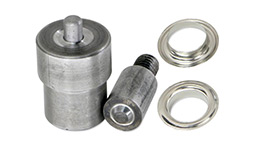
Dec . 22, 2024 04:40
Back to list
أنبوب الضغط
Understanding Pressure Pipes A Comprehensive Overview
Pressure pipes are essential components in various industries, such as water supply, oil and gas, chemical manufacturing, and construction. These pipes are designed to transport fluids and gases under pressure, necessitating a robust engineering approach to ensure reliability, safety, and efficiency. This article delves into the concept of pressure pipes, their types, applications, and key considerations in their design and maintenance.
What are Pressure Pipes?
Pressure pipes are specifically engineered to withstand high internal pressures while maintaining their structural integrity. The pressure within these pipes can arise from several factors, including pumps, gravity, and thermal expansion. To manage this pressure effectively, materials used for pressure pipes must possess excellent tensile strength, corrosion resistance, and durability.
Types of Pressure Pipes
1. Metal Pipes - Steel Pipes Commonly used in oil and gas transportation, steel pipes are known for their strength and resistance to high temperatures. Carbon steel and stainless steel are popular choices, with stainless steel offering enhanced corrosion resistance. - Copper Pipes Often used in plumbing applications, copper pipes are favored for their ease of installation and excellent thermal conductivity. They are generally used for hot and cold water supply systems.
2. Plastic Pipes - PVC Pipes Polyvinyl chloride (PVC) pipes are widely used for water supply and drainage systems. They are lightweight, resistant to corrosion, and cost-effective but are generally limited to lower-pressure applications. - HDPE Pipes High-density polyethylene (HDPE) pipes are increasingly popular for various pressure applications due to their flexibility, durability, and resistance to chemicals. They are suitable for both water and gas transportation.
3. Composite Pipes - These pipes combine materials like plastic and metal to leverage the beneficial properties of both. Composite pipes can handle high pressures while remaining lightweight and resistant to environmental factors.
.
Pressure pipes are imperative in numerous applications across different sectors
أنبوب الضغط

- Water Supply Systems These pipes transport potable water to homes and businesses, necessitating stringent standards to prevent leaks and contamination. - Wastewater Management In sewer systems, pressure pipes ensure the effective removal of wastewater, preventing backflow and contamination of freshwater sources. - Oil and Gas Industry High-pressure pipelines transport crude oil and natural gas over long distances, making it crucial to use materials that can withstand the harsh conditions encountered during transportation. - Industrial Processes Many manufacturing processes require the transport of chemicals and fluids under pressure. Specialized pressure pipes are designed to handle these materials safely.
Key Considerations in Design and Maintenance
When designing and maintaining pressure pipes, several factors must be considered
1. Material Selection The choice of material depends on the type of fluid being transported, the pressure and temperature conditions, and the likelihood of corrosion or chemical reactions. Engineers must carefully evaluate these factors to ensure longevity and safety.
2. Pressure Ratings Each pressure pipe is rated to handle a specific pressure. It’s essential to adhere to these ratings to prevent failures such as leaks or bursts that could lead to environmental hazards or safety risks.
3. Installation Practices Proper installation techniques are critical in ensuring the functionality and safety of pressure pipes. This includes considerations for joining methods, alignment, and support structures.
4. Regular Inspection and Maintenance Routine inspections help identify potential issues such as corrosion, leaks, or structural weaknesses. Implementing a maintenance program can significantly prolong the lifespan of pressure pipes and prevent catastrophic failures.
Conclusion
Pressure pipes are vital for safe and efficient fluid transportation in various applications. Understanding their types, applications, and the critical factors associated with their design and maintenance is essential for engineers, operators, and stakeholders in industries that rely on these systems. As technology advances, the materials and methods for pressure pipe construction will continue to evolve, leading to improved safety and efficiency in fluid transport.
Next:
Latest news
-
Safety Valve Spring-Loaded Design Overpressure ProtectionNewsJul.25,2025
-
Precision Voltage Regulator AC5 Accuracy Grade PerformanceNewsJul.25,2025
-
Natural Gas Pressure Regulating Skid Industrial Pipeline ApplicationsNewsJul.25,2025
-
Natural Gas Filter Stainless Steel Mesh Element DesignNewsJul.25,2025
-
Gas Pressure Regulator Valve Direct-Acting Spring-Loaded DesignNewsJul.25,2025
-
Decompression Equipment Multi-Stage Heat Exchange System DesignNewsJul.25,2025

